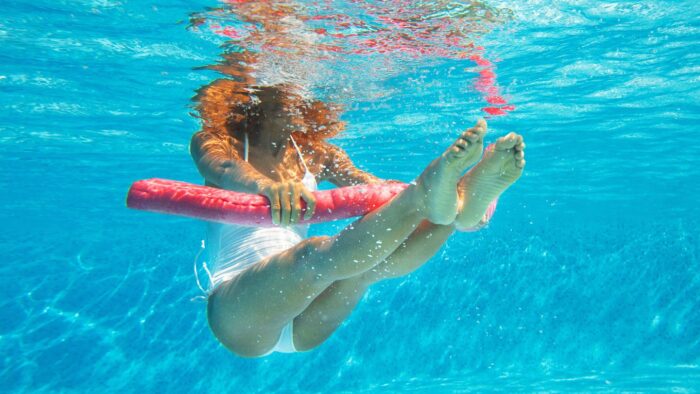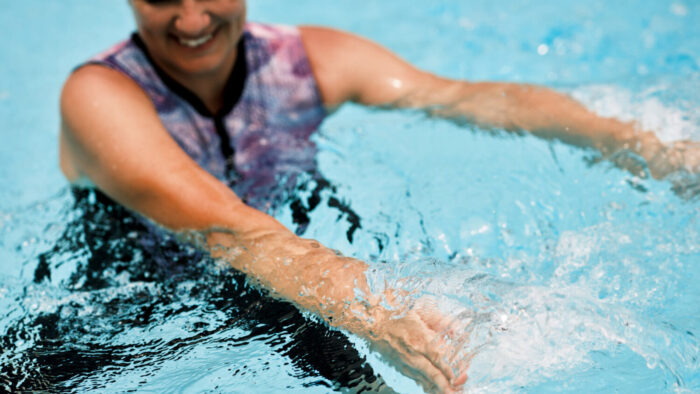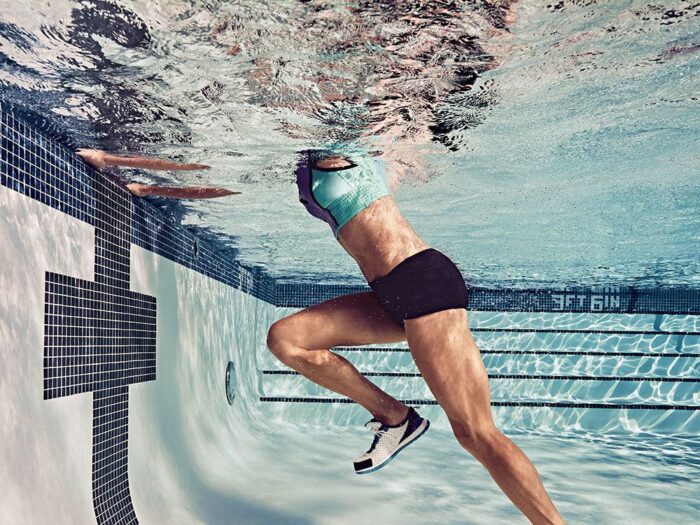Exploring the realm of aquatic fitness uncovers an intriguing blend of water’s soothing qualities with the intensity of a full-body workout. This combination raises an essential inquiry: How effective is pool-based exercise? Investigating the scientific foundations of aquatic fitness sheds light on its legitimacy as a powerful alternative to conventional, land-bound exercise regimes.
The natural resistance provided by water challenges muscles in a way that is distinct from traditional land-based workouts, delivering a level of workout intensity that’s both effective and safer, with a lower risk of injury thanks to its low-impact properties.
Additionally, water’s buoyancy reduces the pressure on the body, allowing for a greater range of motion in exercises and minimizing stress on joints and muscles. Diving into the science behind water workouts reveals a wide array of health benefits that come from aquatic exercise.
It emerges not just as an effective alternative for enhancing physical fitness but also as a scientifically backed approach to achieving overall health and wellness. Keep on reading to learn all about this and how it can help you.
How to optimize your aquatic exercises?

Source: everydayhealth.com
The success of an aquatic exercise program is greatly influenced by the setting, notably the dimensions and configuration of the pool used. Selecting a pool that aligns with your fitness objectives can markedly amplify the effectiveness of your water-based exercises.
For activities like lap swimming, which forms the core of many aquatic fitness routines, a pool with a minimum length of 25 meters is ideal, facilitating continuous, fluid motion for a comprehensive cardiovascular and muscular workout.
On the other hand, exercises focused on water aerobics or rehabilitation may require less length but should have enough depth and width to allow for a range of movements without constraint.
Water resistance is a key factor that elevates the intensity of workouts conducted in a pool, and this is something you should read more about, especially when choosing the right pool for your needs. This resistance, encountered when moving through water, forces the body to exert more effort, thereby enhancing the strength and conditioning benefits of the exercises performed.
The unique aspect of water resistance is its scalability – movements performed with greater speed or force meet with increased resistance, making the workout adaptable to varying fitness levels. The dimensions of the pool can influence the perception and application of this resistance; even in smaller or non-standard pools, incorporating equipment like aquatic dumbbells or resistance bands can intensify the exercises.
Ensuring your aquatic workouts take place in a pool that suits the nature of your exercises is key to leveraging the full advantages of exercising in water, from maximizing the use of water resistance to tailoring workouts for strength, endurance, or recovery.
What are the therapeutic benefits of this type of exercise?

Source: nytimes.com
Engaging in aquatic exercises offers more than just physical health benefits; it also provides profound therapeutic effects that are greatly influenced by the pool’s depth. Tailoring pool depth to specific types of exercises can significantly enhance the recuperative and stress-relieving advantages of aquatic fitness.
For activities focused on recovery or gentle, low-impact exercises, shallower pools allow participants to perform movements with varying degrees of weight support, facilitating muscle and joint rehabilitation in a controlled manner. This versatility in water depth is essential for nurturing recovery while minimizing the risk of overexertion.
Conversely, exercises aimed at intensifying workout regimes or those requiring non-weight-bearing movements benefit from deeper water. Techniques such as aqua jogging, where participants may use flotation devices for alignment without touching the pool bottom, exemplify how deeper pools accommodate vigorous, impact-free workouts.
This depth diversity supports a broad spectrum of rehabilitation, fitness, and therapeutic goals, utilizing water’s buoyancy to alleviate physical strain, making it particularly beneficial for individuals with mobility concerns or chronic discomfort.
Additionally, the calming effect of engaging in water-based exercises, from the tranquil environment to the meditative quality of rhythmic movements, plays a crucial role in mental and emotional wellness.
Customizing workout intensity through strategic use of pool depths enables a personalized approach to both physical and mental health, underscoring the comprehensive wellness advantages of aquatic fitness within thoughtfully designed aquatic spaces.
How can water heal your body and heart and how to utilize it to the maximum?

Source: corehealthcoaching.com.au
The enhancement of cardiovascular health through water-based exercises is significantly influenced by the inherent resistance of water. This natural barrier is crucial for increasing heart rate and improving cardiovascular stamina in a manner that’s gentler on the body compared to land-based aerobic activities.
Activities such as swimming laps, participating in aqua fitness classes, or engaging in energetic water-based routines like aquatic Zumba, offer a unique resistance. This resistance not only intensifies the cardiovascular workout but also contributes to a level of calorie expenditure on par with, or sometimes surpassing, traditional forms of cardio like running or biking.
The appeal of water-based cardio exercises stems from the ability to adjust workout intensity. By changing the pace of movements or using specialized aquatic gear like swim gloves, water weights, or swim fins, individuals can modify how challenging their workout is to suit their unique fitness requirements and objectives. This adaptability makes water-based cardio exercises widely accessible, catering to a range of fitness enthusiasts from novices to seasoned athletes.

Source: training-conditioning.com
The water’s cooling effect also plays a crucial role in enabling more extended exercise sessions with reduced tiredness, contributing to a more enjoyable workout experience and promoting longer durations of physical activity.
This benefit is particularly crucial for maintaining regular cardio exercise, essential for enhancing stamina and fortifying cardiovascular health progressively. Utilizing the natural resistance and cooling effects of water, aquatic workouts offer an optimal environment for cardio development, highlighting the significant advantages of exercising in water for improving cardiac function and overall wellness.
In this context, the pool serves as an unparalleled space for embracing a comprehensive health and fitness strategy. Water resistance is a powerful tool for both muscle building and protecting joints, and the supportive quality of water aids in cardiovascular fitness and body recovery.
The ability to personalize aquatic exercise programs ensures that individuals of any fitness level can achieve their health goals. Moreover, the psychological uplift and stress reduction experienced from engaging in pool activities complement the physical gains, contributing to a well-rounded approach to health through aquatic fitness.

